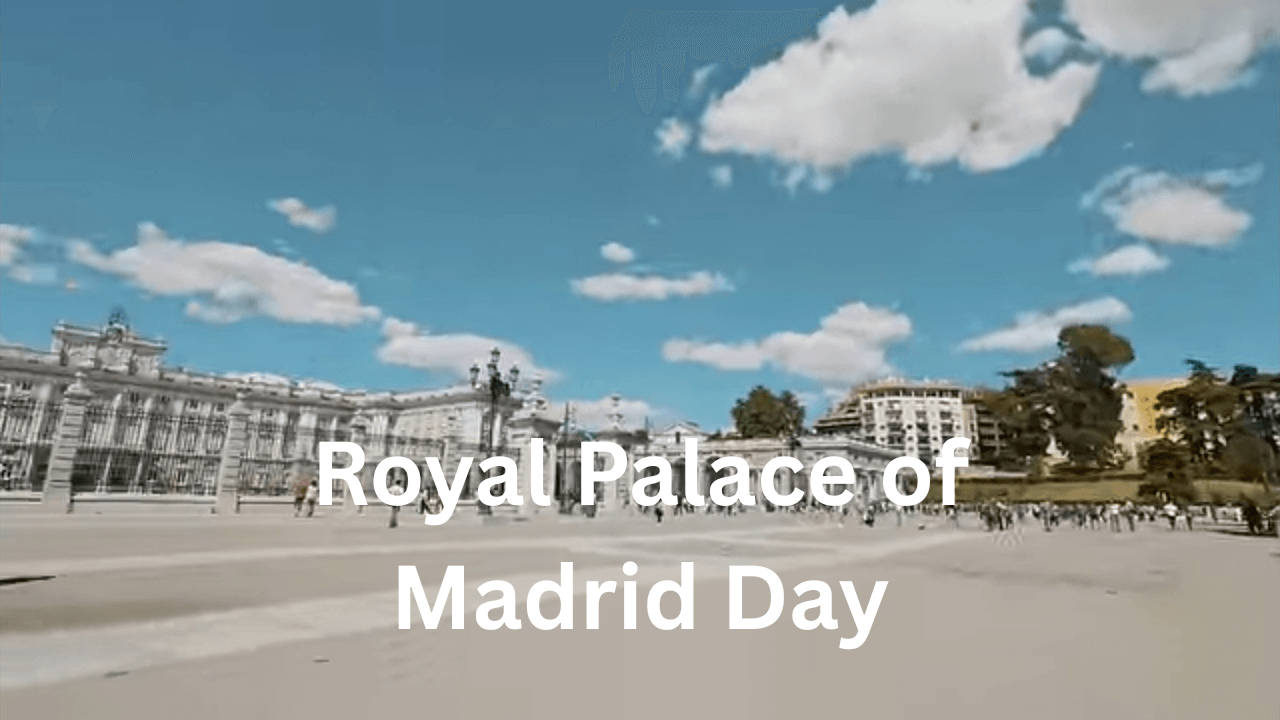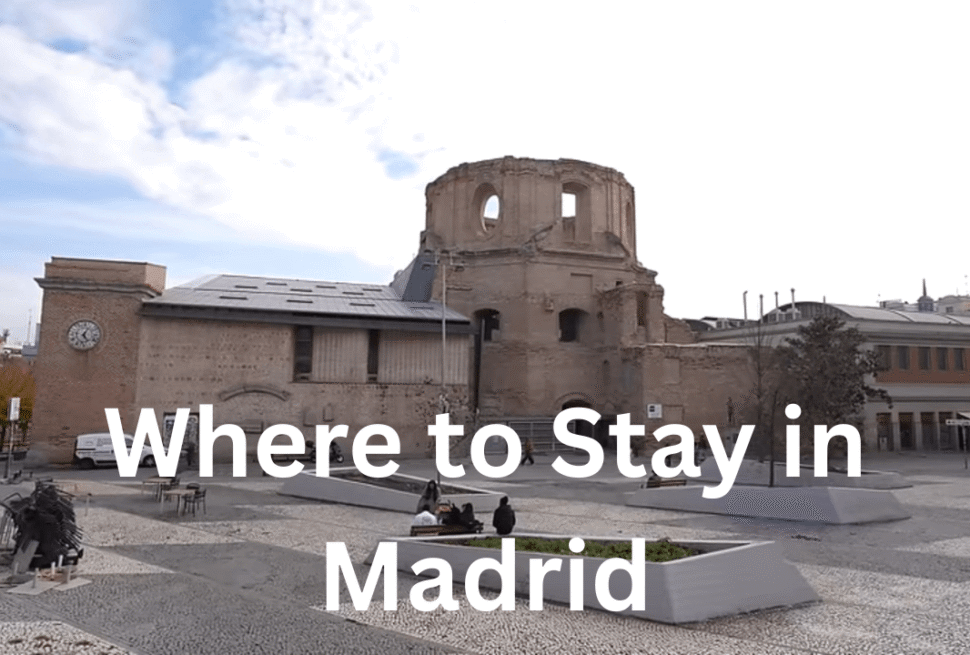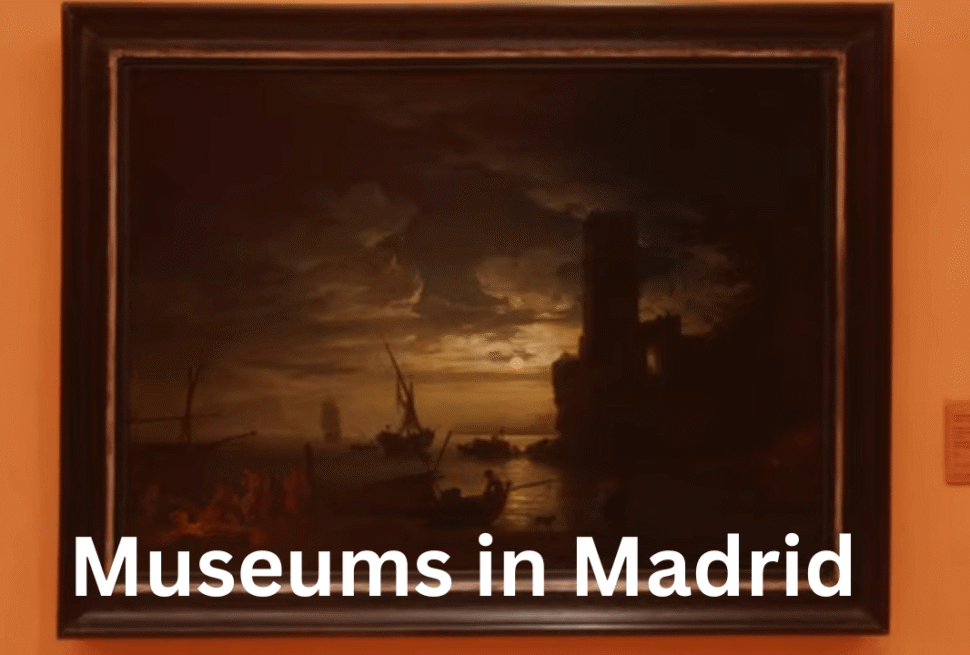The Royal Palace of Madrid is one of those places that instantly makes you feel like you’ve stepped into a different era. Having visited Madrid multiple times, I can honestly say that walking through its grand halls and opulent rooms is an experience that stays with you. From the gleaming chandeliers to the intricate tapestries, every corner of the palace tells a story of Spain’s rich royal history.
For me, the Royal Palace is more than just a historic building—it’s a glimpse into the lives of kings and queens, a place where art, architecture, and history come together in perfect harmony. Whether you’re a history enthusiast, an architecture lover, or simply looking for a spectacular spot for photos, this iconic landmark is a must-see on any Madrid itinerary.
History of the Royal Palace
The Royal Palace of Madrid, or Palacio Real, has a fascinating history that spans centuries. I remember being amazed when I first learned that the site where the palace now stands was originally home to a Moorish fortress in the 9th century. Over time, this fortress transformed into a royal residence, reflecting Spain’s evolving history and royal ambitions.
The current palace was commissioned by King Philip V in the 18th century after the old Alcázar of Madrid was destroyed by fire in 1734. Designed in the grand Baroque style, it was intended to rival the most magnificent palaces in Europe. Walking through the palace, it’s easy to imagine the royal ceremonies, state banquets, and historic events that took place within these walls.
Over the years, the palace has hosted many famous monarchs, including King Charles III, often called the “Mayor King” for his extensive contributions to modernizing Madrid. Today, while it serves primarily for official state functions, the Royal Palace remains a stunning symbol of Spain’s monarchy and history.
Visiting the palace, I couldn’t help but feel a deep connection to the past—each room, each painting, and each piece of furniture seemed to whisper stories from centuries ago. It’s a living testament to Spain’s rich cultural heritage and a must-see for anyone curious about the grandeur of European royalty.
Architecture and Design
The Royal Palace of Madrid is a masterpiece of Baroque architecture, and stepping inside feels like entering a world of grandeur. From the moment I first saw its imposing façade, I was struck by its symmetry, elegant columns, and majestic balconies that reflect the power and prestige of Spain’s monarchy. The palace is not just a building—it’s a work of art in itself.
Exterior Features:
The palace is surrounded by beautiful gardens and courtyards that add to its regal charm. The Sabatini Gardens, with their neatly trimmed hedges and elegant fountains, are perfect for a leisurely stroll before entering. On the other side, the Campo del Moro offers a more romantic, lush landscape, giving you different perspectives of the palace’s magnificence.
Interior Highlights:
Inside, the palace is nothing short of breathtaking. The Throne Room dazzles with its gold leaf decorations, intricate frescoes, and enormous chandeliers. The Royal Chapel, with its delicate architectural details, feels serene and awe-inspiring. I was particularly enchanted by the Banquet Hall, where the walls are adorned with rich tapestries and paintings that tell stories of Spain’s royal past.
Art and Decorations:
The Royal Palace houses one of Europe’s finest collections of art, including works by masters like Goya and Velázquez. The ceilings are adorned with exquisite frescoes, and every room features opulent furniture, porcelain, and decorative objects that speak to centuries of royal taste and craftsmanship.
Unique Features:
Beyond the main rooms, the palace offers fascinating insights into royal life. The Royal Armory showcases weapons and armor from different eras, while the royal kitchens and library give a glimpse into the daily workings of the palace. Each corner reveals a mix of utility, art, and luxury that is simply captivating.
Visiting the Royal Palace, I felt like I was walking through a living museum—every hallway, room, and courtyard offering a story and a moment to marvel at the artistry and vision of Spain’s past rulers. It’s not just a palace; it’s an experience you carry with you long after leaving.
Visiting the Royal Palace
Visiting the Royal Palace of Madrid is an experience that combines grandeur with accessibility. From my own visits, I’ve discovered that a bit of planning can make your trip smoother and more enjoyable.
Opening Hours and Tickets:
The palace is generally open daily, but hours can vary depending on the season. It’s advisable to check the official website for the most current information. Tickets can be purchased online in advance, which I highly recommend, especially during peak tourist seasons. This way, you avoid long lines and secure your preferred time slot.
Guided Tours vs. Self-Guided:
While self-guided visits offer flexibility, I found a guided tour to be invaluable. The guides share fascinating stories about the monarchs, the palace’s history, and hidden details you might miss on your own. If you’re interested in delving deeper into the palace’s rich past, a guided tour is worth every penny.
Best Times to Visit:
Early mornings or late afternoons are ideal if you want to enjoy the palace without crowds. Visiting right when it opens allows for the best photo opportunities and a more peaceful experience in the Throne Room and the Royal Chapel.
Accessibility:
The palace is fairly accessible, with elevators and ramps in key areas, making it easier for visitors with mobility challenges. It’s always a good idea to check their official website for the latest accessibility information before your visit.
Insider Tips:
- Don’t rush—spend time in the gardens and courtyards, which are just as beautiful as the interiors.
- Photography is allowed in certain areas, but always respect the signs and rules.
- Wear comfortable shoes; there’s a lot to explore, and you’ll want to take your time enjoying each room.
- If possible, combine your visit with nearby attractions like Almudena Cathedral or the Plaza Mayor for a full day of exploring Madrid’s royal and historical highlights.
For me, visiting the Royal Palace was not just about seeing a beautiful building—it was about feeling connected to centuries of history, walking the same halls as kings and queens, and soaking in the grandeur that has defined Madrid for generations.
Nearby Attractions
The Royal Palace of Madrid is perfectly situated in the heart of the city, making it easy to explore several must-see attractions within walking distance. During my visits, I always like to plan a full day around the palace so I can soak in as much history, culture, and local charm as possible.
1. Almudena Cathedral
Just steps from the palace, Almudena Cathedral is a stunning example of modern religious architecture with neo-Gothic interiors and colorful dome ceilings. I loved climbing to the top for panoramic views of the palace and surrounding neighborhoods—definitely worth a visit!
2. Plaza Mayor
A short walk away, this iconic square is full of history, cafés, and street performers. I often enjoy grabbing a coffee here and soaking in the atmosphere. Its vibrant energy makes it a perfect contrast to the calm elegance of the palace.
3. Puerta del Sol
Known as the very center of Madrid, Puerta del Sol is lively and bustling, with famous landmarks like the “Kilometer Zero” plaque and the statue of the Bear and the Strawberry Tree. It’s a great spot to feel the pulse of the city after visiting the royal grounds.
4. Sabatini Gardens & Campo del Moro
These palace gardens are serene and beautifully landscaped. I personally love wandering through the Sabatini Gardens in the morning when it’s quiet, and then strolling along Campo del Moro in the afternoon for scenic views of the palace from below.
5. Nearby Museums
If you’re a fan of art or history, several museums are nearby, including the Royal Collections Museum and the Prado Museum a short walk or metro ride away. I like to combine a palace visit with one of these museums for a full cultural day.
Visiting these attractions alongside the Royal Palace made my trips feel complete—mixing grandeur, history, and the lively energy of Madrid’s streets creates an unforgettable experience.
Tips for Visitors
Visiting the Royal Palace of Madrid is an unforgettable experience, but a few insider tips can help you make the most of your trip. From my own visits, I’ve picked up some tricks that make exploring this magnificent palace smoother and more enjoyable.
1. Plan Ahead
- Book your tickets online in advance to skip long lines, especially during weekends or holidays.
- Check the official website for opening hours and any special closures.
2. Choose the Right Time
- Early mornings or late afternoons are the best times to avoid crowds.
- If you want the perfect photos, plan your visit during daylight hours for natural lighting in the gardens and courtyards.
3. Guided vs. Self-Guided Tours
- Guided tours provide fascinating insights about the history, artwork, and hidden details you might miss on your own.
- Self-guided visits are great if you prefer to explore at your own pace and linger in your favorite rooms.
4. Dress Comfortably and Respectfully
- Wear comfortable shoes—you’ll be walking and standing a lot.
- While there’s no strict dress code, modest clothing is appreciated inside the chapel and formal areas.
5. Don’t Miss the Gardens
- The Sabatini Gardens and Campo del Moro are just as stunning as the palace interiors.
- Take your time wandering the paths, enjoying the fountains, and capturing scenic views.
6. Photography Tips
- Photography is allowed in certain areas—look for signs and always respect restrictions.
- For Instagram-worthy shots, try wide-angle shots of the Throne Room or palace exterior at sunrise or sunset.
7. Combine Nearby Attractions
- Pair your visit with Almudena Cathedral, Plaza Mayor, or nearby museums for a full day of exploration.
- Grab a coffee or snack in the nearby squares to recharge between tours.
8. Take Your Time
- The palace is vast, and each room is filled with art, history, and stories. Don’t rush—allow at least 2–3 hours to truly appreciate it.
For me, following these tips turned a simple visit into a memorable experience. From the grandeur of the Throne Room to the serenity of the gardens, the Royal Palace of Madrid is best enjoyed when you take your time and soak in every detail.
Frequently Asked Questions (FAQs)
1. Can I visit all the rooms in the Royal Palace?
Most of the main rooms, including the Throne Room, Royal Chapel, and Banquet Halls, are open to visitors. However, some areas are reserved for official events or administrative purposes, so access may be restricted.
2. How long does a typical visit take?
A self-guided visit usually takes around 2–3 hours. If you take a guided tour or explore the gardens and nearby attractions, plan for half a day to fully enjoy the experience.
3. Are there discounts for students, seniors, or children?
Yes! The Royal Palace offers discounted tickets for students, seniors, and children. Children under a certain age may even enter for free. Check the official website for the latest pricing and eligibility.
4. Is the palace suitable for children or families?
Absolutely! Children can enjoy the grandeur of the palace, the beautiful gardens, and interactive exhibits. That said, younger children may need supervision in certain rooms where delicate artwork is displayed.
5. Can I attend official ceremonies or events at the palace?
Some state ceremonies and official events are held at the palace, but these are generally not open to the public. However, visitors can sometimes witness special exhibitions or temporary displays during public visiting hours.
Here’s a crafted “Conclusion” for your Royal Palace of Madrid blog post:
Conclusion
The Royal Palace of Madrid is more than just a building—it’s a journey through centuries of Spanish history, art, and royal life. From the grandeur of the Throne Room to the serenity of the Sabatini Gardens, every corner offers a story waiting to be discovered.
Visiting the palace allows you to connect with the past while experiencing the vibrant energy of Madrid’s city center. Whether you’re a history enthusiast, an architecture lover, or simply a traveler seeking unforgettable experiences, the Royal Palace is a must-see landmark that will leave a lasting impression.
During my visits, I found that taking the time to explore each room, wander the gardens, and combine the trip with nearby attractions makes the experience truly magical. It’s not just a place to see—it’s a place to feel, learn, and immerse yourself in the splendor of Spain’s royal heritage.
Plan ahead, take your time, and let the Royal Palace of Madrid inspire awe, curiosity, and admiration—it’s a memory that stays with you long after you leave.




